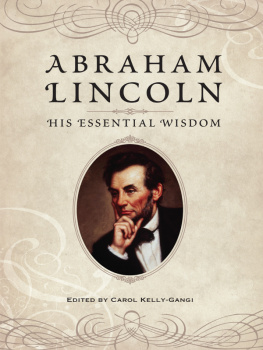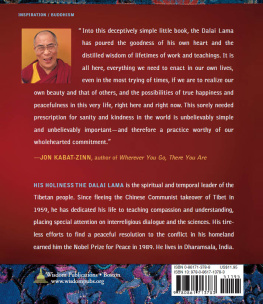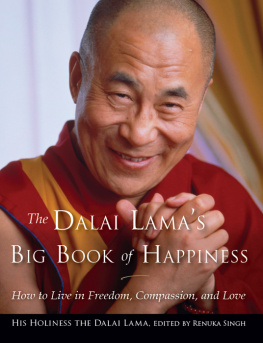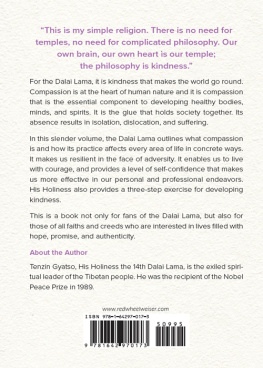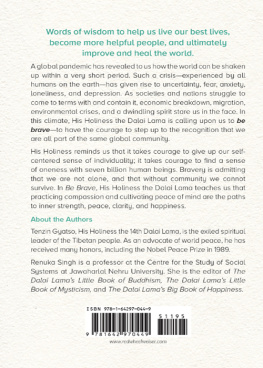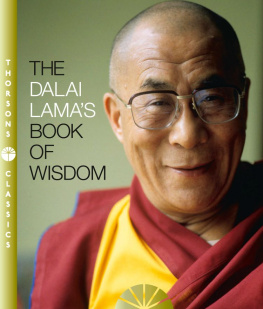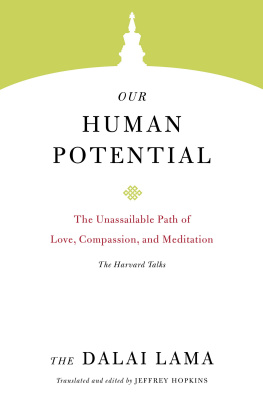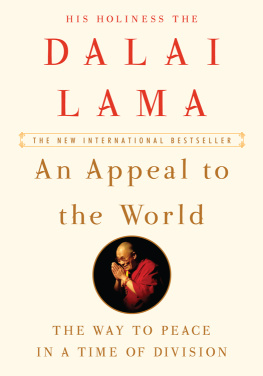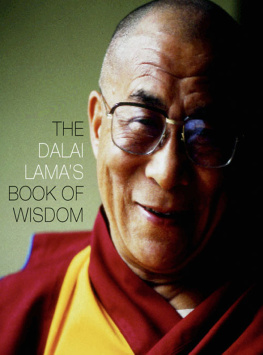Carol Kelly-Gangi - The Dalai Lama
Here you can read online Carol Kelly-Gangi - The Dalai Lama full text of the book (entire story) in english for free. Download pdf and epub, get meaning, cover and reviews about this ebook. year: 2011, publisher: Fall River Press, genre: Religion. Description of the work, (preface) as well as reviews are available. Best literature library LitArk.com created for fans of good reading and offers a wide selection of genres:
Romance novel
Science fiction
Adventure
Detective
Science
History
Home and family
Prose
Art
Politics
Computer
Non-fiction
Religion
Business
Children
Humor
Choose a favorite category and find really read worthwhile books. Enjoy immersion in the world of imagination, feel the emotions of the characters or learn something new for yourself, make an fascinating discovery.

- Book:The Dalai Lama
- Author:
- Publisher:Fall River Press
- Genre:
- Year:2011
- Rating:5 / 5
- Favourites:Add to favourites
- Your mark:
- 100
- 1
- 2
- 3
- 4
- 5
The Dalai Lama: summary, description and annotation
We offer to read an annotation, description, summary or preface (depends on what the author of the book "The Dalai Lama" wrote himself). If you haven't found the necessary information about the book — write in the comments, we will try to find it.
The Dalai Lama — read online for free the complete book (whole text) full work
Below is the text of the book, divided by pages. System saving the place of the last page read, allows you to conveniently read the book "The Dalai Lama" online for free, without having to search again every time where you left off. Put a bookmark, and you can go to the page where you finished reading at any time.
Font size:
Interval:
Bookmark:
THE DALAI LAMA:
His Essential Wisdom
Edited by Carol Kelly-Gangi

Compilation 2007 by Fall River Press
All rights reserved. No part of this publication may be reproduced, stored in a retrieval system, or transmitted, in any form or by any means, electronic, mechanical, photocopying, recording, or otherwise, without prior written permission from the publisher.
Fall River Press
122 Fifth Avenue
New York, NY 10011
eBook ISBN: 978-1-4351-3303-7
ISBN-13: 978-0-7607-8866-0
15 14 13 12 11 10 9 8 7 6 5 4 3 2
The quotes in this book have been drawn from many sources, and are assumed to be accurate as quoted in their previously published forms. Although every effort has been made to verify the quotes and sources, the Publisher cannot guarantee their perfect accuracy.
To John Christopher and Emily Grace with love.
CONTENTS
Lhamo Thondup, the future 14th Dalai Lama, was born on July 6, 1935 in Taktser, Amdo, Tibet. He was the ninth child born to his mother but only the fifth child to survive. At that time, he had an elder sister, eighteen years older than him, and three elder brothers. The Dalai Lamas mother was said by him to be the kindest person he had ever known. She once gave the entire contents of her pantry to a famine-stricken family who arrived at her door from nearby China. The Dalai Lama recalls his father as a man with a quick temper though not one to hold grudges for very long. They lived on a small farm and used most of what they grew to feed their family. Though they were poor, the family was raised in an atmosphere of loving kindness.
In December of 1933, the 13th Dalai Lama, Thupten Gyatso, died in Lhasa at the age of fifty-seven. The government immediately formulated a search party to locate the new incarnation of the Dalai Lama. Through a series of signs, the search party was led to the monastery in Kumbum and ultimately to the house of Lhamo Thondup, who was nearly three years old. The leader of the search party, a lama disguised as a servant, observed the young child closely for the entire day. Despite the lamas disguise, the child was able to correctly identify him, calling out Sera lama, Sera lama, Sera being the monastery to which the holy man belonged. The search party returned again bringing with them several items that had belonged to the 13th Dalai Lama along with items that did not. In each case, the child correctly chose the items that had belonged to the 13th Dalai Lama. After consideration of these and other signs, the search party became convinced that Lhamo Thondup was indeed the new incarnation of the Dalai Lama.
On February 22, 1940, Thondup was enthroned as the 14th Dalai Lama in Lhasa. Shortly thereafter, he was inducted as a novice monk and was renamed Jamphel Ngawang Lobsang Yeshe Tenzin Gyatso. He thus began his monastic education at the age of five. His curriculum was that which is customary for a monk studying for a doctorate in Buddhist philosophy. His formal education would continue for close to twenty years.
In October of 1950, an army of 80,000 from Communist China crossed over the border into Tibet. The situation worsened as the months wore on, and the people of Tibet began to advocate for the Dalai Lama to assume full temporal control of Tibet. After consideration by the highest levels of government and consultation with an oracle, it was agreed. On November 17, 1950, at the age of fifteen, the Dalai Lama assumed full temporal leadership of Tibet. He immediately appointed two new Prime Ministers and sent delegations abroad in the hopes of gaining international support for Tibets position. However, in May of 1951, under sigificant duress, the so-called Seventeen-Point Agreement was reached between Tibet and China, which in effect, returned Tibet to the motherland of China.
In the years that followed, the Dalai Lama did all that he could to prevent a full takeover of Tibet by the Chinese, including an historic trip to China in July of 1954 where he met with Mao Zedong and other Chinese leaders for peace talks. By March of 1959, however, it became clear that the Dalai Lamas life was in danger. Thousands of Tibetans took to the streets and surrounded the palace in order to protect the life of their young leader. After consultation with his ministers and an oracle, the Dalai Lama came to the conclusion that he had to leave Tibet in order to prevent a fullscale massacre of the thousands of Tibetans who would fight to the death to save him. On March 17, 1959, the Dalai Lama, disguised as an ordinary soldier, slipped out of the gates of Norbulingka Palace with his Chamberlain, Abbot, and bodyguard, and began the three-week journey to the safety of India. Many thousands of Tibetan refugees followed him there.
Upon his arrival in India, the Dalai Lama immediately set out to meet with Indian officials and devised the plans necessary to rehabilitate the Tibetan refugees and provide for the education of their children and the preservation of the Tibetan religion and culture. He set up the government of Tibet in Exile and formally repudiated the Seventeen-Point Agreement.
Once under Chinese control, the Tibetan people were ruthlessly suppressed. Many thousands of Tibetans were executed, imprisoned, and sent to labor camps, and martial law was declared. During the Cultural Revolution that followed, the Chinese embarked on a plan to systematically destroy the religion of the Tibetan people. By 1976, only a small number of Tibets more than 6,000 monasteries and convents were still standing. More than a quarter of a million monks and nuns were forced to leave the religious life and more than 100,000 were tortured and murdered.
For forty-eight years, the Dalai Lama in exile has worked tirelessly on behalf of Tibet and the six million Tibetans for which he is responsible. He made numerous appeals to the United Nations for the humane treatment of Tibetans by the Chinese. In 1987, the Dalai Lama proposed the Five Point Peace Plan to Congress and expanded on the plan in 1988 in Strasbourg to members of the European Parliament. His Middle Way proposal offered the Chinese control of the foreign policy and defense of Tibet in exchange for internal autonomy. On December 10, 1989, the Dalai Lama was awarded the Nobel Peace Prize which he accepted in a spirit of optimism as he spoke of the reaffirmation of nonviolence, peace, and understanding between all members of the human race.
This book offers readers hundreds of inspiring quotations from the Dalai Lama. In these excerpts, His Holiness the Dalai Lama speaks with simple eloquence about the need for compassion and kindness; the search for happiness; the meaning of pain and suffering; the importance of family; the path to peace; the role of religion; and the challenges of life in the modern world. In other selections, the Dalai Lama recalls his singular childhood; the turmoil surrounding the Communist takeover of Tibet; and his close to fifty years in exile.
At the age of seventy-one, the Dalai Lama continues to travel the globe wherever he is welcome to spread his undying message of kindness, love, and compassion to Buddhists and non-Buddhists alike. Though he is content to embrace the role of a simple Buddhist monk, the Dalai Lama is universally recognized as a champion of world peace and human rights everywhere and one of the worlds foremost spiritual leaders.
Carol Kelly-Gangi
Rumson, New Jersey, 2007
I n the few months before I was born, my father himself had been badly ill and unable to get out of bed. Yet on the morning of my birth, he got up feeling perfectly well, and offered prayers and filled the butter lamps which always burned on our family altar.... When I was born, and my mother told him, Its a boy, he simply said, Good. I would like to make him a monk.
Next pageFont size:
Interval:
Bookmark:
Similar books «The Dalai Lama»
Look at similar books to The Dalai Lama. We have selected literature similar in name and meaning in the hope of providing readers with more options to find new, interesting, not yet read works.
Discussion, reviews of the book The Dalai Lama and just readers' own opinions. Leave your comments, write what you think about the work, its meaning or the main characters. Specify what exactly you liked and what you didn't like, and why you think so.

